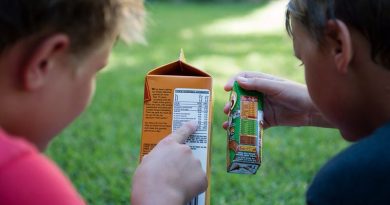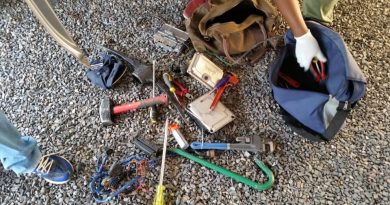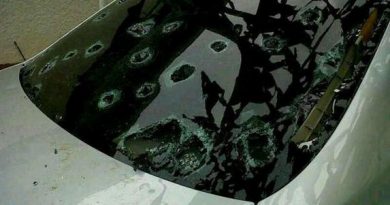I have a Thatched Roof..Would it require special considerations for Insurance Cover?
Did you know that a lightning strike (a perennial risk on the Highveld) is much more likely to cause a power surge and damage your electronic equipment and appliances than start a fire? Or that a lightning mast – one of those ubiquitous masts one sees next to thatched buildings – could be more of a liability than an asset if it’s not properly maintained? Or that fire retardants don’t actually stop fires? Or that different types of fire extinguishers are required for thatch? Or even that you will need to completely replace that thatched roof periodically?
A thatched roof (as opposed to tile, slate, concrete, asbestos, metal or zinc roofs, which are deemed to be standard) is regarded as a non-standard construction by insurers, and this will be taken into account when determining your home insurance cover and premium.
But as long as you do all the right things – such as having the roof professionally installed, having it regularly maintained, obeying the law and taking steps to reduce fire risk – your insurer will provide you with good cover, and not quibble should the worst happen and you need to submit a claim.
To enjoy your thatched roof (and, of course, great insurance cover on it) for many years, you should …
… Install it properly
You will not be covered if your roof is of defective design, specification, construction, workmanship or material. All thatched roofs need to be installed and maintained by professionals.
The top layer of thatch rots over time, and needs to be brushed every five to eight years. When a thatched roof is originally built, its thickness should always allow for this maintenance. But when the roof reaches a minimum thickness, it is time to re-thatch.
The location and size of a lapa is also relevant to insurance cover; for example, most insurers want to know whether or not it is within five metres of the main residence, and the square metreage relative to the main residence’s roof (there may be additional premium required if it is more than 10-15% of the main residence’s). These factors will have a bearing on your cover, so consider the location and size of that lapa you so desire.
… Maintain it properly
You will not be covered if your building is not maintained properly, or has been damaged, over a period of time by mildew, damp, or wet- or dry-rot.
Have your thatched roof professionally brushed and keep an eye on the roof for any changes, which could indicate a potential problem. During the rainy season check your roof regularly, as dampness can lead to the growth of fungus, which decomposes the thatch.
Make sure the thatch can dry well; remove trees and plants that may hinder the sun and wind from drying it or rain from dispersing. A common maintenance problem in thatched roofs is lack of drainage, which leads to premature rotting and leaks.
Use rakes to remove leaves, needles and moss from the roof. In dry weather conditions the moss loosens its grip on the thatch, and is easier to remove.
… Protect against fire
It should go without saying that thatch, while attractive, is also highly combustible – and becomes more so over time, as the thatch layer becomes thinner and heats up more quickly.
A very important consideration is isolating chimneys. All chimneys must comply with National Building Regulations regarding factors such as height and materials used, and non-combustible flashing must be installed around the chimney.
Fire retardant is an optional protective measure. Importantly, it slows heat build-up, but doesn’t stop a fire. If used, it should be maintained as per the manufacturer’s specification, which is usually every three years. If not, it will make the thatch brittle, which will lead to the roof being vulnerable to hail damage.
There are other steps you can take. For example, a fire-retardant blanket can be inserted in between layers of thatch, which will protect against fire spreading throughout the roof.
In case of fire, you should install at least a 5kg CO2 fire extinguisher in every kitchen or cooking area. Different types of extinguishers are designed to fight different types of fires. CO2 or “B” class extinguishers are best in cooking areas. Water extinguishers or “A” class are best to use directly on the thatch, and should be kept on every floor or loft if the building is higher than one storey.
So check extinguishers’ labels to see if they are “A” or “B” when you place them in strategic areas in your home. It is also cost effective to use water hose reels outside for the roof, grass and surrounding vegetation. Remember to service all your extinguishers annually.
… Protect against lightning
Direct lightning strikes are actually rare, but they do happen and can cause fires. A far more common risk is that lightning will cause a power surge, damaging electrical equipment and appliances.
A surge protector is designed to limit the voltage supplied to the property by blocking or short-circuiting unwanted voltage to the ground. While surge protection devices cannot eliminate the risk of damage entirely, there are many instances in which they can substantially limit the damage caused by lightning and power surges. It is highly recommended to protect the distribution board with an adequate device, and in some cases this may be the only requirement that your insurer will have as protection against lightning.
A freestanding lightning mast works in much the same way as a surge protector, but it must be earthed and bonded sufficiently. The mast shouldn’t be too short; it has to be at a height where the 45-degree protective angle – for a virtual “umbrella” from the top of the mast – covers the entire roof. If you extend your building, ensure your mast is high enough to cover it in its entirety.
A lightning mast must also be maintained at least annually – otherwise, it will leak electrical surge into the ground, causing not only surge problems for you but likely your neighbours as well. In fact if you install a mast you should also have surge protection, as the mast will not be sufficient to prevent damage to the equipment in your home.
… Keep thatch away from metal
There should not be anything metallic that is not earthed and bonded, within one metre of a thatched roof. This includes metal pipes, metal structures and even cabling. If they are in the roof, they must be earthed and bonded well.
… Have the proof
At the end of the day, keep certificates and invoices of all installation and maintenance work that has been done by qualified professionals in a safe place – and, given the fire risk, not in your thatched home.
Rather save such information in the cloud, so that you can access it anytime, anywhere.
Most importantly, understand what your policy will or will not cover; if in doubt, ask your broker.
[Article shared with permission from Hollard]
Lightning and the Safety of Pedestrians -When it Roars Go Indoors!! https://t.co/TavYfBRk1r #ArriveAlive #Lightning @ReenvalSA @SAWeatherServic @peoples_weather pic.twitter.com/cuFuiwOK9u
— Arrive Alive (@_ArriveAlive) April 21, 2020




